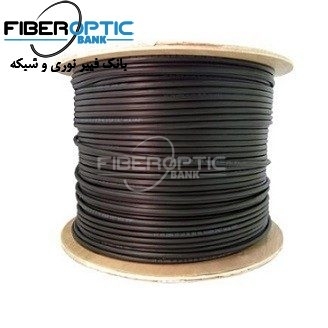optical fiber has changed the world
The development of optical fiber has been a key enabler for technology, from the planet’s largest and most complex machine to the latest quantum encryption. Connecting the elements of the internet together safely and reliably is a major challenge that engineers have been addressing over the last thirty years.
All this comes from a quirk of nature, where total internal reflection allows a beam of light to travel hundreds of kilometres down a glass fiber or shorter distance down a plastic version. Here are some of the ways optical fiber has changed the world as we know it:
Carrying the Internet
Glass fibers enable phenomenally high data rates. Researchers at NTT in Japan have shown data transfer rates of 768Tbit/s down a cable with 30 fiber cores, but this 2018 record is most likely to be broken in 2019 as the world demands more and more data.
Optical data cables are laid across every ocean, linked by repeaters that are themselves optical fibers. These repeaters are amplifiers using fibers doped with elements such as erbium to boost the data signals as they travel the globe. Surviving at the depth of the oceans and in the most hostile environments on earth, the fibers and repeaters connect up all the nodes of the Internet, delivering petabytes of data every day.
The fibers also connect up the world’s data centres, providing fast ways in and out to deliver billions of apps and services to smartphones, and connecting up billions of devices in the Internet of Things. All this data needs to be delivered quickly and easily into data centres for analysis, monitoring equipment around the world as part of next industrial revolution, Industry 4.0.
Delivering data
Optical fibers have a huge impact on homes around the world. While data rates increase yearly over copper cables with tens of megabits, optical fibers provide gigabits into the home. This has driven the revolution of on-demand video streaming, and gigabit fiber broadband is driving the revolution in digital services. Despite the hostile environment, optical fibers to the home and office provide higher reliability than twisted pair or even coax copper cables, with lower cable costs and impact on the environment. Optical fibers are also less vulnerable to being dug up and sold as scrap for their copper content.
Saving lives
But optical fibers are not just about data. Fibers with a tiny camera on the end allow surgeons to see into almost every part of the body, a vital part of keyhole surgery that helps millions people around the world every year. Other fibers in the same cable can also carry high power laser light, accurately cutting out growths and tumours and minimising any damage to surrounding tissues that just isn’t possible with traditional scalpels and knives. Fiber optic technology is opening up new medical procedures all the time, finding more ways to identify and tackle all kinds of diseases and medical challenges.
Sensing the world
Optical fibers can even be used as several different types of sensors. As the fibers move, the light inside changes, and these changes can be detected. Optical fiber been installed in concrete to monitor the stresses and strains of buildings that cannot otherwise be detected. They can also be used to measure temperatures down oil wells, delivering data from the most hostile possible environments without being influenced by electromagnetic interference. Fiber woven into fabrics is even producing power for wearable computers at the same time as providing temperature data.
Optical fiber also enables modern flight. Kilometres of doped fibers coiled in a gyroscope give detect motion with much high degrees of accuracy than GPS navigation, guiding aircraft and ships safely around the world.
Enabling the quantum revolution
While the basics of optical fiber go back a hundred years, the technology is at the forefront of the latest developments in quantum encryption. As quantum computers come to market, they will be able to crack today’s encryption algorithms, and new technology is urgently needed. This comes from quantum encryption, using two photons that have been entangled. This means that one photon cannot be intercepted or changed without affecting the other one, regardless of where they are in the world, enabling them to be used as cryptographic keys. Fiber optic cables are used to distribute the keys from the sender to the receiver, and this quantum key distribution (QKD) ensures that financial, government and personal data can be sent across the world safe from interception.
Source: community.element14
Related products...
fiber-optic-cable
SGCC fiber optic cable 24 core (4*6) , singlemode ADSS-SPAN80
Micro Fber Optic Cable
fiber-optic-cable
Superior Essex fiber optic cable 48 core (4*12), single mode Armored OUT















[ratings]